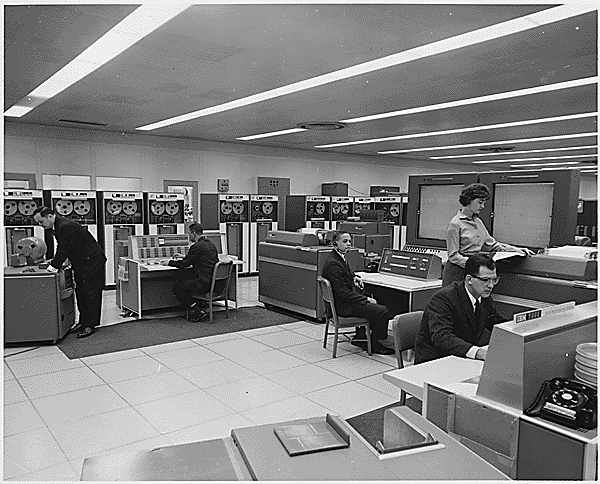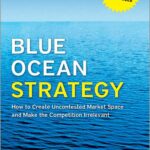Manager entrepreneurs use their causal reasoning skills to conduct a competitive analysis to help them define a unique niche for their business. This is demonstrated by the blue ocean strategy postulated by W. Chan Kim and Renée Mauborgne. In contrast, founder entrepreneurs use their effectual reasoning skills and apply the strategic partnership principle to get customers to help define their niche products or services.
Founder entrepreneurs do not start with a pre-determined target market or niche in mind nor do they conduct a competitive analysis to see who else is offering similar solutions since they are not sure of their ultimate solution yet. Instead, they target a single customer and conduct a dive deep analysis on their very specific needs. This analysis helps them understand and then design a custom solution to meet that customer’s specific needs with a “one size fits one” solution. They pick the brain of their single target customer and do not focus on their competitors. They strive to develop a product or service that is so well aligned with the customer’s desires that it dislodges any incumbents that are operated by manager entrepreneurs with a “one size fits many” solution. Once the solution is established, the founder-entrepreneur looks for ways to re-purpose the solution for other potential customers.
By engaging the customer in designing the solution, founder entrepreneurs invite their clients to be strategic partners as opposed to simply someone to sell to.
When I started Horizon Interactive, an infrastructure business, my first customer was Digital Equipment Corporation. As a former employee, I worked with their divisions to design our deliverables and processes based on their specific needs. Rather than performing any upfront competitive analysis, we engaged the client directly to help us design our service offering. We even educated the client on possibilities they were not aware were of based on our technical domain experience using the three T’s of challenging sales.
Having the client participate in the design was more effective than speculating on what a potential customer might want, building it, and then trying to sell it to them. Furthermore, our customer has ownership in the solution since they helped design it and were much less likely to switch to competitors in the future.
Moreover, founder entrepreneurs often secure development funds before even committing resources to a solution by having a strategic partnership with their client. In this way, the founder-entrepreneur has a low level of capital outlay when developing their offering.
One of my business mentors, Ron Muns, used the strategic partnership principle very effectively when he started his company Bendata.

With the personal desktop computer just making inroads into businesses, companies needed a way to track the location of all their computer-related assets since they were no longer all located in a central computer lab. Ron developed a strategic partnership with three clients to develop a software application to track all their computer-related assets across their businesses. Each strategic partner contributed technical specifications for the application and provided a portion of the capital needed to develop the first product.
In the end, Muns owned the rights to the underlining software while the strategic partners got their application for a fraction of the cost of doing it alone.

The software Bendata initially developed morphed several times as he added new features to the application for new customers and to achieve a better Product-Market-Fit (PMF). Ultimately, the product went on to become the wildly successful GoldMine Customer Relationship Management (CRM) application and spun off several other successful businesses, including the Help Desk Institute, along the way.
As a variant of the strategic partnership principle, some founder entrepreneurs leave their employer and develop a business based on their extensive industry knowledge and relationship with their former employer’s vendors and customers. This was the case with Sam Walton who parted ways with his former employer, Ben Franklin Five, and Dime and created Walmart. Another example is Arthur Blank and Bernie Marcus who left their former employer, Handy Dan Home Improvement Center, and started Home Depot.
All too often conventional business advice discourages founder entrepreneurs from practicing the strategic partnership principle of making the customer part of the design process, fearing that exposing them to a less than perfect product will diminish their brand. Instead, they advise new businesses to identify the most profitable customer segment, perform a detailed market and competitive analysis, and define and build a unique product where there is limited competition before ever getting any real customer feedback.
In the next post, we will explore the leverage contingency principle practiced by founder entrepreneurs.
Is your product or service based on defining a unique product for an untapped customer segment through the use of a competitive analysis or is it based on working directly with a customer and getting them to not only bring real-world requirements to your design but getting them to perhaps even pay for some or all of its development as well?
The follow series of post make up what I call the “New Small Business Manifesto”
- Why Being Told You Need a Business Plan May Be Bad Advice
- Why The Business Planning Advice You Have Received Is Probably Stale
- Why The Business Advice You Are Getting Is One-Sided
- How Your Reasoning Skills Can Affect Your Business Success
- Affordable Loss Principle – Reaching Markets with Minimum Resources
- Strategic Partnership Principle – The Truth about Competitive Analysis
- Leverage Contingency Principle – Planning for the Unexpected
- Exploit the Future by Shaping It – Don’t Try to Predict It












